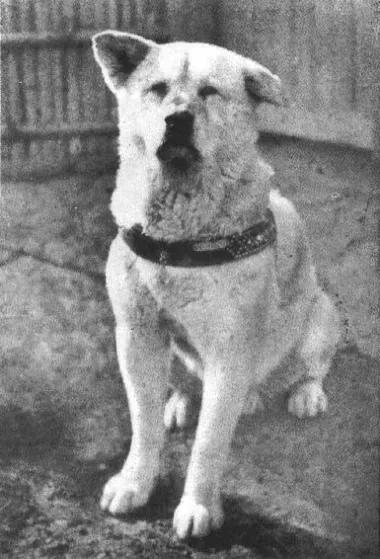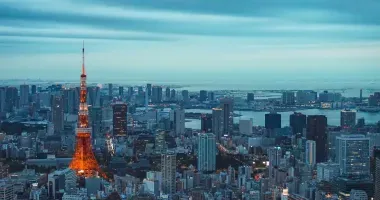Shibuya Station 渋谷駅
Shibuya is the major station in the southwest of Tokyo, located between Harajuku and Ebisu on the Yamanote line, and surely one of the best known in the entire capital. It opens onto the district of the same name where young people come to shop and enjoy the nightlife in one of the many bars in the area.
Shibuya Station Overview
Stations in central Tokyo are, by default, enormous and multi-faceted. Shibuya Station is no exception to this, and, in fact, it is one of the busiest stations in the city and, thus, the world. This station largely operates within Tokyo and the greater Tokyo area and has nine different lines with 14 different platforms spread out through the central Shibuya Ward area, both above ground and within an underground complex.
The most prominent of these lines are the ones operated by Japan Railways, often signified with a two letter acronym starting with the letter "J." The Yamanote LIne (JY) is likely the most famous of these, arriving and departing from Platforms 1 and 2 and looping around the city.
Platform 1 goes towards Shinjuku and Ikebukuro. Platform 2 goes towards Shinagawa and Tokyo Station. Other JR-operated lines include the JR Saikyo Line (JA) that leaves from Platform 3 and then the Shonan Shinjuku Line (JS) that leaves from Platforms 3 and 4. Platform 4 is also where the Narita Express, which goes out to and from Narita Airport in Chiba, will arrive and depart from.
Most of the remaining lines out of Shibuya Station are part of the Tokyo Metro System. The Den-en Toshi Line leaves from Subway Platform 1 and goes out Futako-Tamagawa. Platform 2 is for the Hanzomon Line out towards Otemachi and then east to Oshiage. Platforms 3 and 4 are for the Toyoko Line and go west towards Kanagawa. For those going out to Yokohama from Shibuya Station, this is an ideal train to choose from, with great stops within Tokyo like Daikanyama, Gakugei Daigaku-mae, Nakameguro, and Jiyugaoka on the way. Platforms 5 and 6 are for the Fukutoshin Line, out towards Ogawamachi.
In separate, but not faraway buildings from the main station, the Ginza Line goes out towards Eastern Tokyo, passing Ginza as the name implies. The Inokashira Line is in a nearby annex and goes to stations such as Shimokitazawa, Meidaimae, and Kichijoji.
A little history
The station resonates in the Japanese imagination, particularly because of the story of the dog Hachikô. The latter used to accompany his master every morning to the station and to come and wait for him there in the evening.
When he died in 1925, Hachiko continued to come and wait for his master in front of the station every evening. This lasted until his death ten years later.
A bronze statue of Hachiko in front of the station's main entrance was inaugurated in 1934 and is now a meeting place for Tokyoites.
The station was also 1946 the scene of the confrontation known as the "Shibuya incident" during which nearly a thousand yakuza clashed with several hundred Taiwanese gang members. A clash of rival gangs against the backdrop of the heavy shortage that existed in post-war Japan.
- Read also: Top 5 Yamanote mascots
Iconic places
The station is surrounded by many iconic places. The first, and the most famous of them, is the Shibuya Crossing.
Opposite the station, the cars are stopped for 55 seconds at this huge pedestrian crossing to let the crowd pour into this large square illuminated by huge advertising screens.
At the intersection, the Shibuya 109 shopping center , with its tower and its 8 floors of stores dedicated to women's fashion, is a shopping mecca for young Japanese women. It is also the nerve center of the culture of the 1990s "gyaru", these tanned and discolored young girls with flashy style.
The Shibuya Stream building, which opened its doors last September, is directly connected to the station. Its 35 floors house cafes, restaurants, offices, and open spaces.
The tower has since its opening become a popular place in the district thanks to its opening on the Shibuya River and its terrace cafes which give a second life to the southern sector of Shibuya, traditionally less sought after than the rest of the district.
It is also in this tower that the Xiringuito Escriba restaurant, whose paella is more than famous in Barcelona, opened its first establishment in Japan.
Discover the Yamanote, Tokyo's iconic subway line:
- Tokyo Station
- Nippori Station
- Uguisudani station
- Ueno Station
- Okachimachi Station
- Akihabara Station
- Kanda Station
- Yurakuchō Station
- Shimbashi Station
- Hamamatsucho Station
- Tamachi Station
- Ebisu Station
- Shibuya Station
- Harajuku Station
- Yoyogi Station
- Shinjuku Station
- Shin-Okubo Station
- Takadanobaba station
- Ikebukuro Station
- Otsuka Station
- Komagome Station
- Tabata station



































